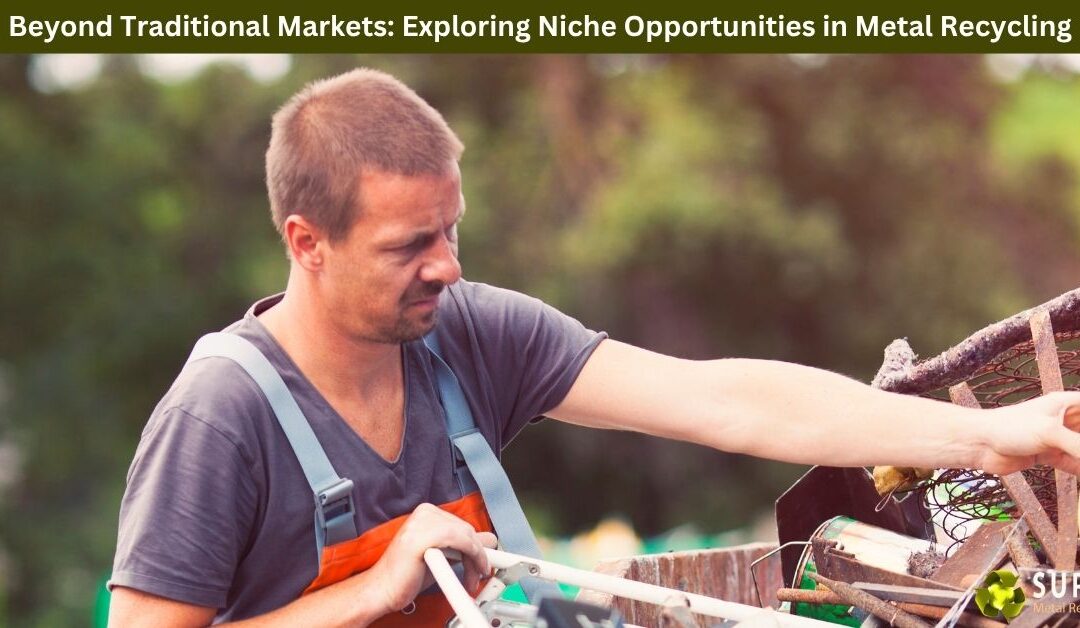When people think about metal recycling, the usual suspects come to mind — scrapped cars, old appliances, building materials, and industrial offcuts. And yes, these are still the backbone of the recycling industry. But what if we told you that beyond these conventional markets lies a whole world of niche opportunities just waiting to be tapped?
In today’s changing economic and environmental landscape, looking beyond the obvious is not just smart — it’s necessary. Let’s dive into some of the lesser-known but increasingly valuable corners of the metal recycling world.
The Rise of E-Waste and Tech Scrap
Let’s start with the fast-growing mountain of electronic waste. Phones, laptops, gaming consoles, smartwatches — all loaded with valuable metals like gold, silver, copper, palladium, and rare earth elements.
While traditional recycling often focuses on bulk metals like aluminium and steel, e-waste offers a more specialised — and sometimes more profitable — stream. The challenge? These devices are small, complex, and difficult to dismantle. But for those with the right tools and know-how, the return can be significant.
Companies and recyclers that invest in e-waste recovery technology are already ahead of the curve. It’s not just about volume anymore — it’s about value per gram.
Aerospace and Defence Scrap
Now, here’s a niche with real potential: aerospace and defence materials. Aircraft and military-grade equipment use high-performance metals like titanium, Inconel, and specialised aluminium alloys that aren’t found in your average backyard shed.
These materials are expensive, hard to source, and — importantly — recyclable. When planes are decommissioned or parts are upgraded, the leftover metal is often auctioned off or scrapped. Recyclers that can process these metals correctly are in high demand, especially with global supply chain pressures increasing.
It’s not a massive-volume market, but it is a high-value niche — ideal for specialised recyclers.
Art, Architecture, and Custom Design
Here’s something you might not expect: more and more artists, sculptors, and architects are turning to scrap metal for their creative projects. From urban sculptures made of rusted steel to sleek, industrial-style furniture crafted from salvaged copper and brass, the demand for unique, character-filled metal is growing.
For metal recyclers, this opens up a whole new customer base — not the big industrial buyers, but independent makers and designers who are willing to pay a premium for materials with texture, patina, and history.
Some recyclers have started curating specific types of scrap — think weathered sheets, patterned grates, or vintage machine parts — and selling them directly to the creative community. It’s metal recycling with an artistic twist.
Niche Automotive Parts and Vintage Vehicles
Car recycling is nothing new, but within that world lies another niche: vintage and specialty vehicle parts. From classic Holdens to rare motorcycles, there’s strong demand for original metal components that are no longer manufactured.
Scrapyards that identify and preserve these parts — rather than sending them straight to the shredder — can tap into a market of restorers, collectors, and enthusiasts.
It’s all about knowing what to keep and who might be looking for it.
Medical and Dental Metal Waste
You might not think about healthcare as a source of scrap metal, but it’s there — in surgical tools, orthopaedic implants, dental crowns, and even old X-ray machines. Materials like stainless steel, titanium, and even small amounts of precious metals often end up discarded.
With proper handling (and strict adherence to health and safety standards), these items can be collected and recycled. It’s a niche that requires trust, careful procedures, and attention to detail — but it’s another area where recyclers can make an impact while reducing waste from a critical industry.
Renewables and Green Energy Equipment
As Australia and the rest of the world shift toward renewable energy, another recycling niche is growing: solar panels, wind turbines, and batteries.
Solar panels, in particular, contain aluminium framing and valuable metals in their internal components. As older panels start reaching end-of-life, there’s a growing need for responsible recycling solutions.
Wind turbines, while larger and less frequently replaced, also contain recyclable steel, copper, and rare metals in their motors and wiring.
By planning ahead and creating systems to handle this emerging waste stream, recyclers can position themselves as leaders in green infrastructure support.
So, What’s the Takeaway?
Niche markets in metal recycling might not always be the biggest or easiest to access — but they often offer the best opportunities for growth, profit, and innovation. The key is to keep your eyes open, stay flexible, and look at metal waste not just as a material to be melted down, but as a resource with a story, a purpose, and a future.
At Super Metal Recycling, we’re always on the lookout for new directions. Whether it’s collaborating with artists, processing tech waste, or preserving rare parts, we believe the future of metal recycling lies in smart, creative, and forward-thinking approaches.
Because beyond the traditional markets, there’s a whole world of metal just waiting to be recycled — and reimagined.
If you are in Ferntree Gully, and looking for a metal recycling service, this is the best way to visit us.
Super Metal Recycling
345 Frankston – Dandenong Road, Dandenong South VIC 3175
(03) 9706 4909


Recent Comments